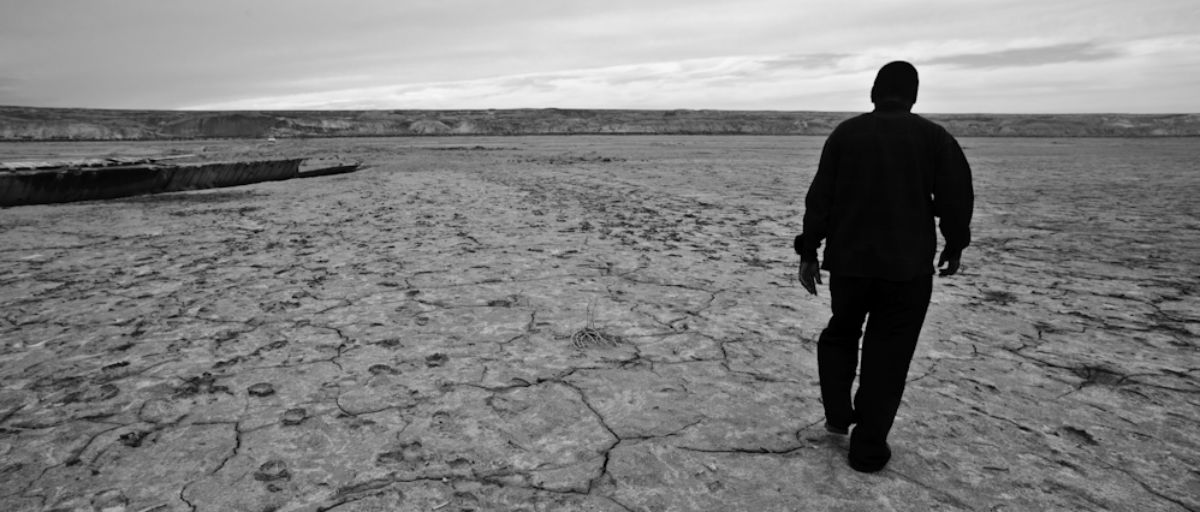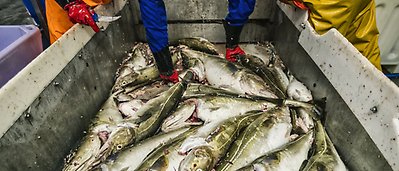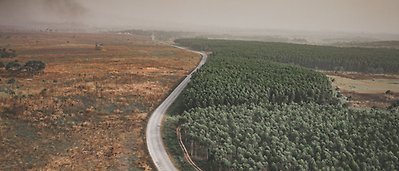
Climate-related disaster can spark conflict in areas where there are tensions between ethnic groups, a new study argues Photo: Fanz/Flickr
Bildtext får vara max två rader text. Hela texten ska högerjusteras om den bara ska innehålla fotobyline! Photo: B. Christensen/Azote
CLIMATE DISASTERS AND CONFLICT
Cooling conflict in climate disasters
PNAS study examines if climate-related disasters increase the risk of conflict outbreaks
- Globally 9% of armed-conflict outbreaks coincide with disaster occurrence, of those 23% occur highly ethnically fractionalized countries
- Disasters do not directly trigger conflict, but rather are disruptive in vulnerable societies
- Study also considers vulnerability and exposure of societies to climate-related disasters
The Aral Sea, bordering Kazakhstan and Uzbekistan, was once the world’s fourth largest lake. It provided livelihoods for many along its coast. Fish were plentiful and healthy, and beaches were full of swimmers and sunbathers.
However, in just over 30 years, water mismanagement led to environmental disaster, and unfortunately a series of conflicts; between governments, but also between minority groups in the region.
The case of the Aral Sea’s degradation and subsequent conflict, unfortunately, is not an isolated case. In fact, a new study in PNAS co-authored by centre researchers Jonathan Donges and Hans Joachim Schellnhuber, found that while conflict situations are heavily context-dependent, clashes between ethnic groups can be intensified in the event of a climate-related natural disaster, such as a drought or flood.
“Globally, we find a coincidence rate of 9% regarding armed-conflict outbreak and disaster occurrence, such as heat waves or droughts. Our analysis also reveals that about 23% of conflict outbreaks in ethnically highly fractionalized countries robustly coincide with climatic calamities.”
Jonathan Donges, co-author
While this study highlights the concurrence of events, Donges, a post-doctoral researcher, cautiously notes that this should not be mistaken for causation of conflict events itself.
“We do not report evidence that climate-related disasters act as direct triggers of armed conflicts, but the disruptive nature of these events seems to play out in ethnically fractionalized societies in a particularly tragic way. We also highlight that climate change is projected to affect regions with more frequent and stronger disasters that are already vulnerable to conflict outbreaks due to their high ethnic fractionalization. Additional efforts joining security, climate, and development policies are necessary to make such regions more resilient.”
Linking disasters and conflict events
To understand this relationship, the researchers first outline that climate-related natural disasters in this study are examined as their economic impact, and that conflict specifically means armed conflict in the affected region. The researchers then use a method called event coincidence analysis (ECA) to test if the disaster’s impact and timing of the conflict coincide, focusing on disasters and conflicts from 1980 to 2010.
ECA is a statistical tool that tests whether conceptually related events occur in light of each other. It is a common test in neuroscience research, but also has been used to test other related events, such as plant growth rates in various extreme climates, or the emergence and disappearance of various hominin species during the Pliocene and Pleistocene epochs.
The research group looked at the 50 countries with the strongest ethnic divides, and considered the economic impact of each disaster with respect to each country’s GDP. This allows for the study to understand the impact of the disaster in the specified region. The study also goes beyond solely focusing on temperature, and differentiates between disaster types, such as climatological disasters; for example, droughts; and hydrological disasters; for example, floods. It also considers different types conflict, such as between and within nations.
Amplifying already existing tensions
Whether armed conflict and climate-related disasters are related has been historically disagreed upon among scientists. While other studies in the past have examined this relationship, however, the context of each situation has been overlooked.
“A clear shortcoming of most studies investigating the relation between climate change and armed conflicts is that they focus solely on meteorological indices, such as temperature, neglecting the crucial importance of vulnerability and exposure of society to the climate impacts. This might be one reason for the disagreement in the literature. Moving beyond these indices, and accounting for vulnerability and exposure to climate change, as well as conflict risk, provides a promising way forward,” says Schellnhuber, a senior research fellow at the centre.
Moving beyond generalization, and one-dimensional indices of climate impact, and considering the vulnerability and exposure of each region helps to provide a more context-specific understanding of climate and conflict situations.
Schleussner, C. F., J. F. Donges, R. V. Donner, and H. J. Schellnhuber. 2016. Armed-conflict risks enhanced by climate-related disasters in ethnically fractionalized countries. Proceedings of the National Academy of Sciences 113(33): 9216-9221.
Jonathan Donges is a postdoctoral researcher holding a joint position at the centre, as a Stordalen Scholar, and the Potsdam Institute for Climate Impact Research, Germany. His work focuses on the planetary boundaries in the Earth system from a complex dynamical system’s perspective.
Hans Joachim Schellnhuber is senior research fellow at Stockholm Resilience Centre and director of the Potsdam Institute for Climate Impact Research (PIK).






